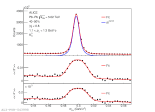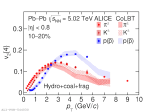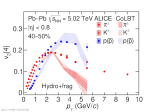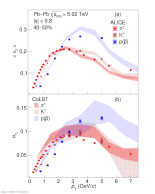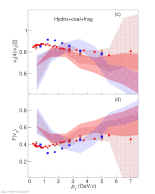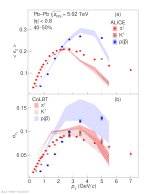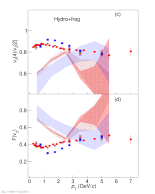Figures from paper submitted to Journal of High Energy Physics
Abstract:
The first measurements of elliptic flow of $\pi^\pm$, ${\rm K}^\pm$, p+$\overline{\rm p}$, ${\rm K_{S}^0}$, $\Lambda$+$\overline{\Lambda}$, $\phi$, $\Xi^-$+$\Xi^+$, and $\Omega^-$+$\Omega^+$ using multiparticle cumulants in Pb$-$Pb collisions at $\sqrt{s_{\rm NN}}$ = 5.02 TeV are presented. Results obtained with two- ($v_2\{2\}$) and four-particle cumulants ($v_2\{4\}$) are shown as a function of transverse momentum, $p_{\rm T}$, for various collision centrality intervals. Combining the data for both $v_2\{2\}$ and $v_2\{4\}$ also allows us to report the first measurements of the mean elliptic flow, elliptic flow fluctuations, and relative elliptic flow fluctuations for various hadron species. These observables probe the event-by-event eccentricity fluctuations in the initial state and the contributions from the dynamic evolution of the expanding quark-gluon plasma. The characteristic features observed in previous $p_{\rm T}$-differential anisotropic flow measurements for identified hadrons with two-particle correlations, namely the mass ordering at low $p_{\rm T}$ and the approximate scaling with the number of constituent quarks at intermediate $p_{\rm T}$, are similarly present in the four-particle correlations and the combinations of $v_2\{2\}$ and $v_2\{4\}$. In addition, a particle species dependence of flow fluctuations is observed that could indicate a significant contribution from final state hadronic interactions. The comparison between experimental measurements and CoLBT model calculations, which combine the various physics processes of hydrodynamics, quark coalescence, and jet fragmentation, illustrates their importance over a wide $p_{\rm T}$ range.
JHEP 05 (2023) 243
e-Print: arXiv:2206.04587 | PDF | inSPIRE
